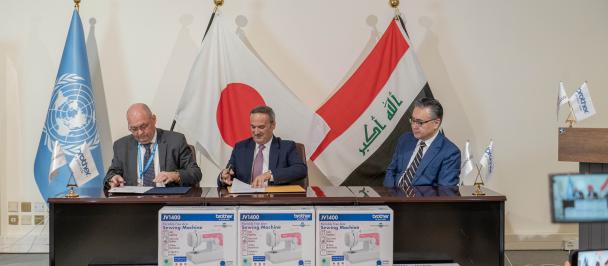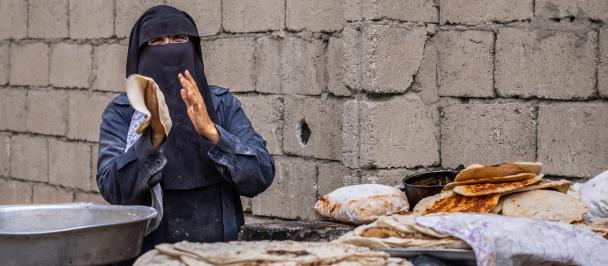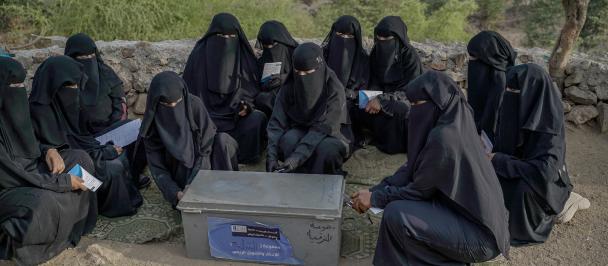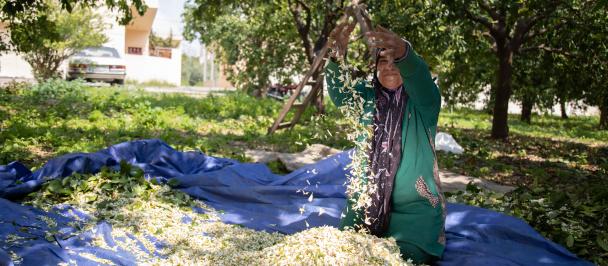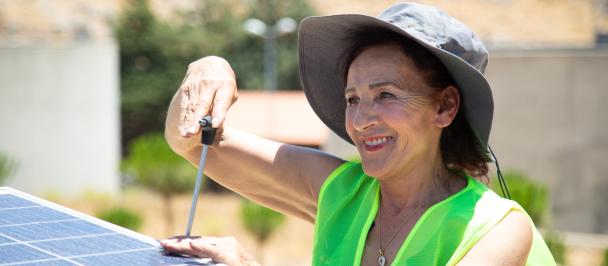Beirut: The Central Administration of Statistics (CAS), in partnership with the United Nations Development Programme (UNDP), launched today Lebanon’s first gender statistical report entitled “The life of Women and Men in Lebanon: A Statistical Portrait”. The report provides the most comprehensive compilation of gender-disaggregated statistics and indicators and highlights key trends underpinning the country’s progress towards achieving gender equality over the past 15 years. The report focuses on six thematic areas, namely: demography, health, education, labor market, socio-economic conditions, decision-making and human rights.
Specifically, the report shows that progress towards achieving gender equality varies across life domains. For instance, education is an area where gender parity has been achieved in Lebanon whereby the country is considered well positioned when it comes to school attendance for primary school age. The Net Attendance Rate for both girls and boys of the corresponding age-groups is at nearly 90 percent and the Gender Parity Index of 1.0 confirms that there is no gender gap. For higher levels of education, Net Attendance among girls is considered higher than that of boys. Yet significant disparities remain in terms of labor market participation. While women made up 52.6 percent of the working age resident population, less than 30 percent of them have been actively engaged in the labor market. This may be indicative of a likelihood of women’s economic dependence and an indication of lower returns on investment in education. The report also highlights that gender stereotyping still influences women’s choices in terms of their professional occupation, as 9 out of 10 women are employed in the services sector. Women’s work in manufacturing and agriculture is still very limited. Low participation in the labor force could be partially attributed to the persisting disparities in the pay level between men and women. The report shows that Lebanese women earn on average 6.5 percent less than Lebanese men.
The report further indicates that women are highly under-represented in politics, including in the government and in senior and middle management positions. For instance, the proportion of seats held by women in parliament remains very low. The share of women parliamentarians of total parliament members remains considerably low at 4.7 percent over the past fifteen years (in 2005 and 2018 elections). Similarly, the election of women in local governments across municipalities in Lebanon remains a challenge. Successful female candidates in the municipal elections of 2016 made up only 5.4 percent of the total elected candidates across all municipalities. Women are still under-represented in top career and leading positions. The share of women in senior and middle management in the public sector has improved, increasing from 30 percent in 2004 to 42.3 percent in 2018-19; yet women are still not at par with men. Under-representation of women is more pronounced in the private sector as only 26.5 percent of managerial positions were held by women in 2018-19.
The launch of this report comes against the background of a multifaceted and deep crisis in Lebanon, with unprecedented impacts, and amidst the calls for reforms. Gender equality and inclusion should be at the center of Lebanon’s reform agenda, and gender analysis and statistics, as contained in the report, are an important contribution towards achieving this objective.
“We believe that reliable, timely and quality gender statistics are essential to provide a clear picture of the relative status of women and men in Lebanon and to further promote gender equality across the work of the Government of Lebanon. This report is expected to inform future policymaking, especially in the perspective of the increasing interest in gender statistics. With the little resources available to CAS, the administration is trying to bridge existing data gaps and to meet the massive demand for gender statistics relying on its own human resources, and on the generous support provided by donors and international organizations.” said Dr. Maral Tutelian Guidanian, Director General at the Central Administration of Statistics.
“The report is a result of our long-standing partnership with the Central Administration of Statistics (CAS). It is part of our commitment to support the Lebanese administration in improving data production and dissemination and in developing evidence-based policymaking and planning. Gender equality, which is centered in human rights, is a development objective on its own right; it is also a critical factor for enabling reforms in Lebanon and long-term sustainable development. Specifically, this latest report brings into focus the imperative to eliminate gender inequalities through targeted, gender-focused policies that take into account the experiences, needs, and contributions of women.” added Celine Moyroud, UNDP Resident Representative.
Statistics and indicators presented in the report are drawn from the findings of several national surveys that have been carried out by CAS since 2004, as well as the latest official data provided by relevant Ministries and public administrations. The report is accessible in English on the website of UNDP Lebanon and the Central Administration of Statistics.
For more information, please contact
In UNDP – Lebanon | Rana Moughabghab | rana.moughabghab@undp.org | +961 3 835 351

 Locations
Locations